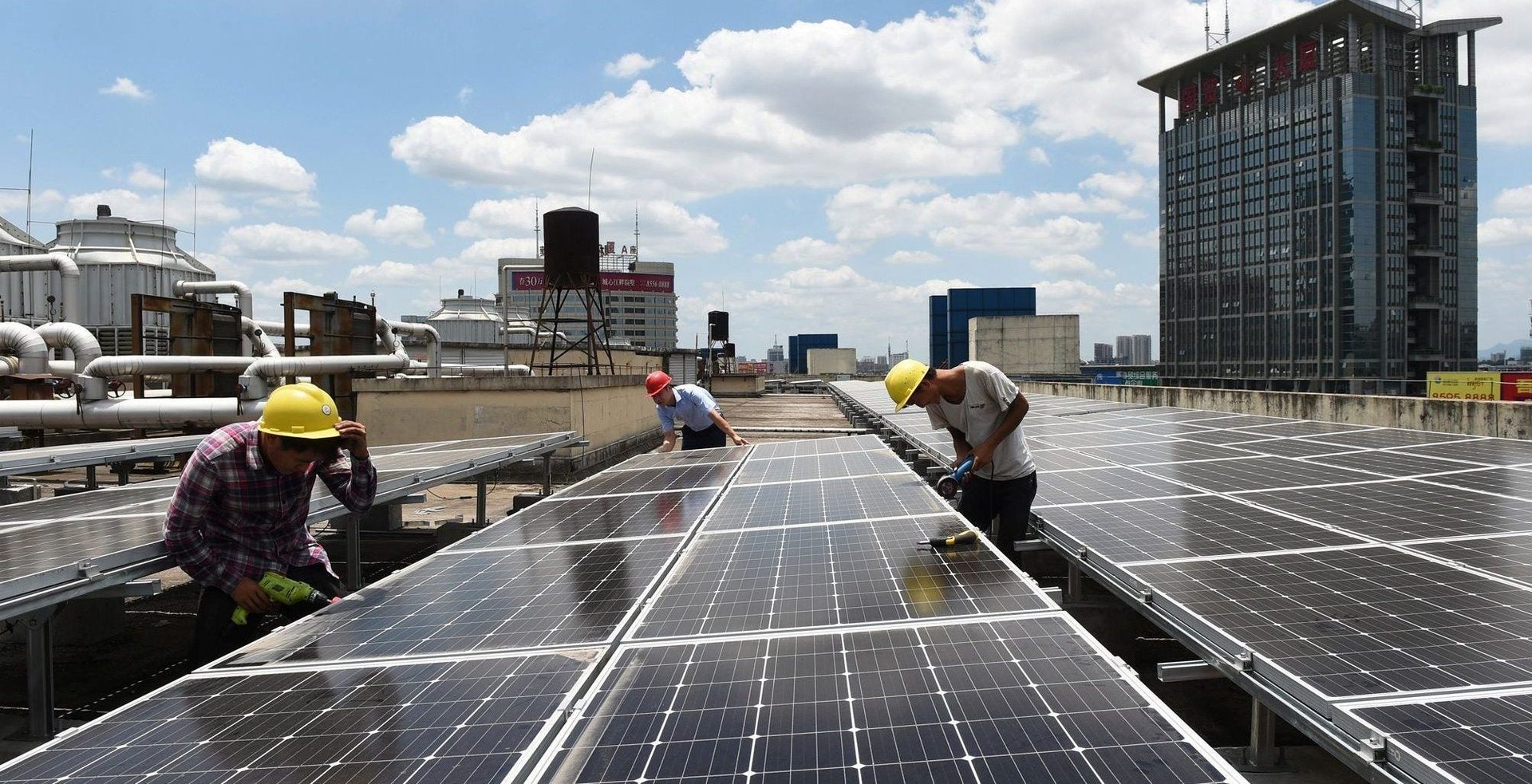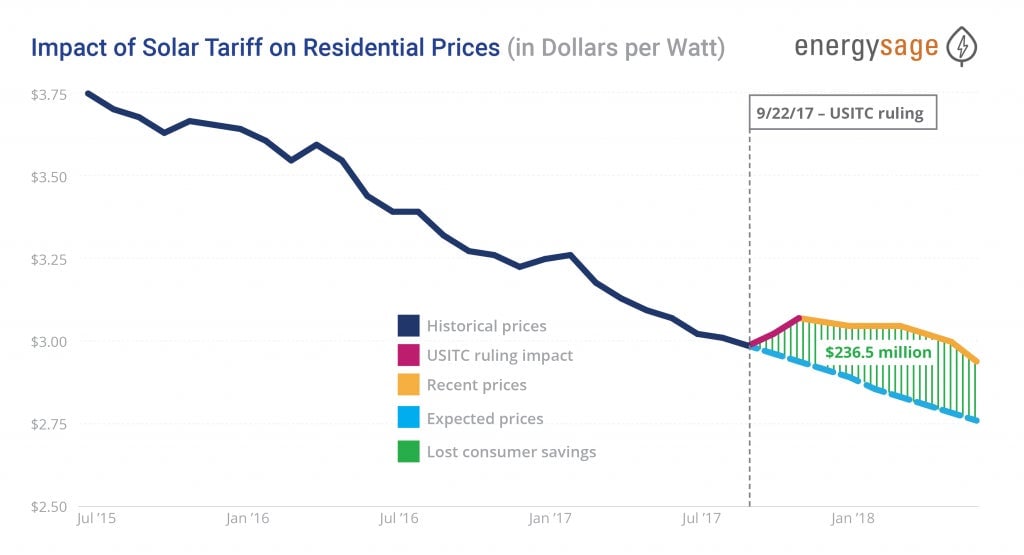Trump’s solar tariffs haven’t stopped America’s switch to solar
In 2017, the solar industry was expected to be a casualty in Donald Trump’s trade war. In January, the US president slapped a 30% tariff on imported solar cells and panels (also known as modules). The tariffs on China’s solar industry were expected to raise solar panel prices, and depress new installations for years to come.


In 2017, the solar industry was expected to be a casualty in Donald Trump’s trade war. In January, the US president slapped a 30% tariff on imported solar cells and panels (also known as modules). The tariffs on China’s solar industry were expected to raise solar panel prices, and depress new installations for years to come.
But a funny thing happened on the way to the trade war: US utilities have doubled down on building new solar power plants. The number of utility-scale solar projects being built in the US has “exploded:” a record 8.5 gigawatts (GW) were procured in the first half of 2018, according to industry reports. Although the market contracted slightly in 2017, next year’s contracts are already more than expected when the trade war was heating up.
Ellen Roybal of GE Solar called the final impact of the tariffs “largely inconsequential.” Federal tax credits, state renewable energy goals, and plunging prices for equipment from China have driven healthy demand despite the import duties. “We’re seeing the pipeline of projects to be built in 2019-2020 accelerating for us and the industry as a whole,” Roybal wrote by email.
One reason is that the Chinese slashed domestic subsidies for the solar industry. On May 31, China announced it was removing domestic feed-in tariffs (favorable long-term contracts for renewable energy producers) and moving utility-scale solar to competitive bidding. That elicited cut-throat competition between rival firms, flooding the global market, and sending photovoltaic module prices plunging to their lowest level ever.
Solar prices briefly spiked in September 2017 after a US trade commission ruled domestic solar manufacturers were being harmed by cheap imports, but solar panel prices soon resumed their downward trajectory by the end of the year. EnergySage, a marketplace for residential solar installations, reports residential solar installations are now falling by 0.5% per month, just under the average of 0.7% between 2015 and 2018.

But there’s still collateral damage, specifically among homeowners. Utilities were able to take advantage of falling wholesale prices faster than residential installers. Vikram Aggarwal, founder of EnergySage, estimates the price of the average home solar system has risen by 6%, equivalent to $500 to $1,000, as a result of the tariffs. That suggests American households have lost roughly $250 million over the last year due to higher prices.